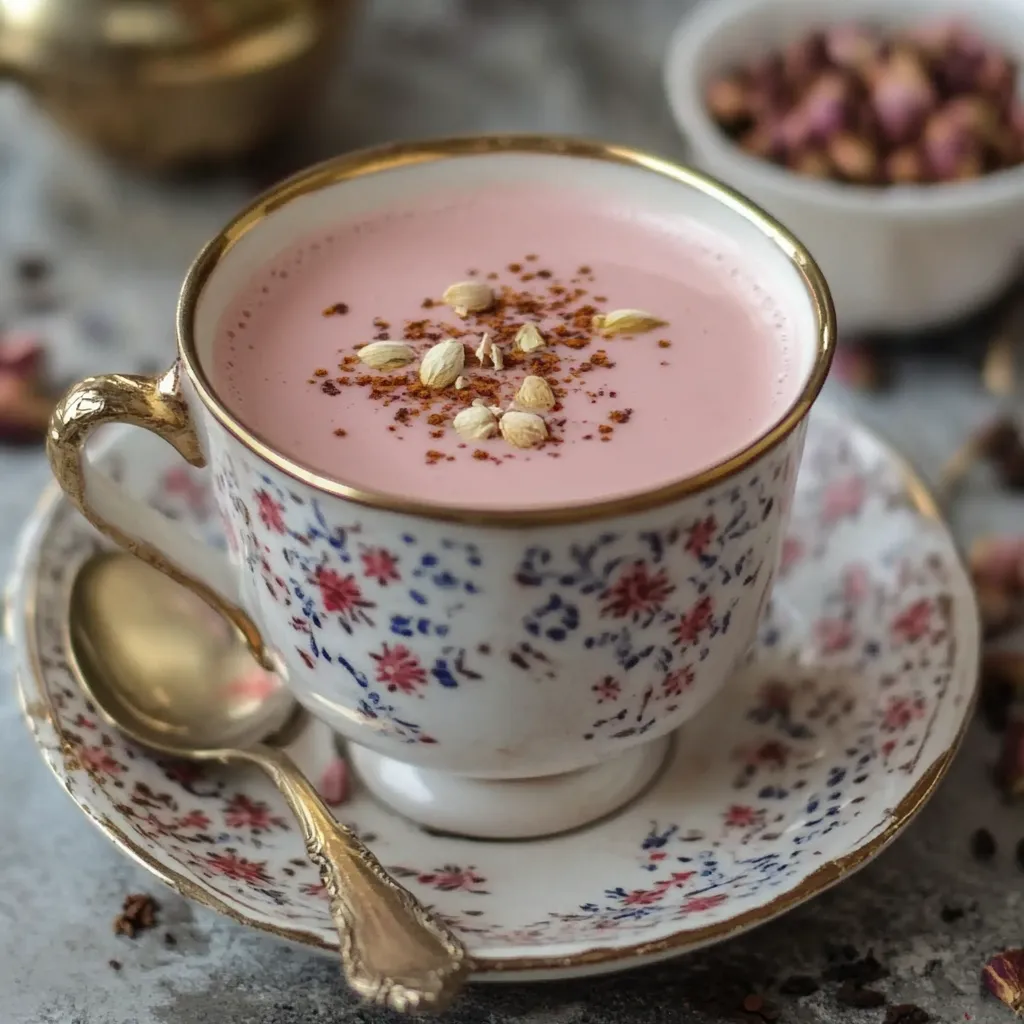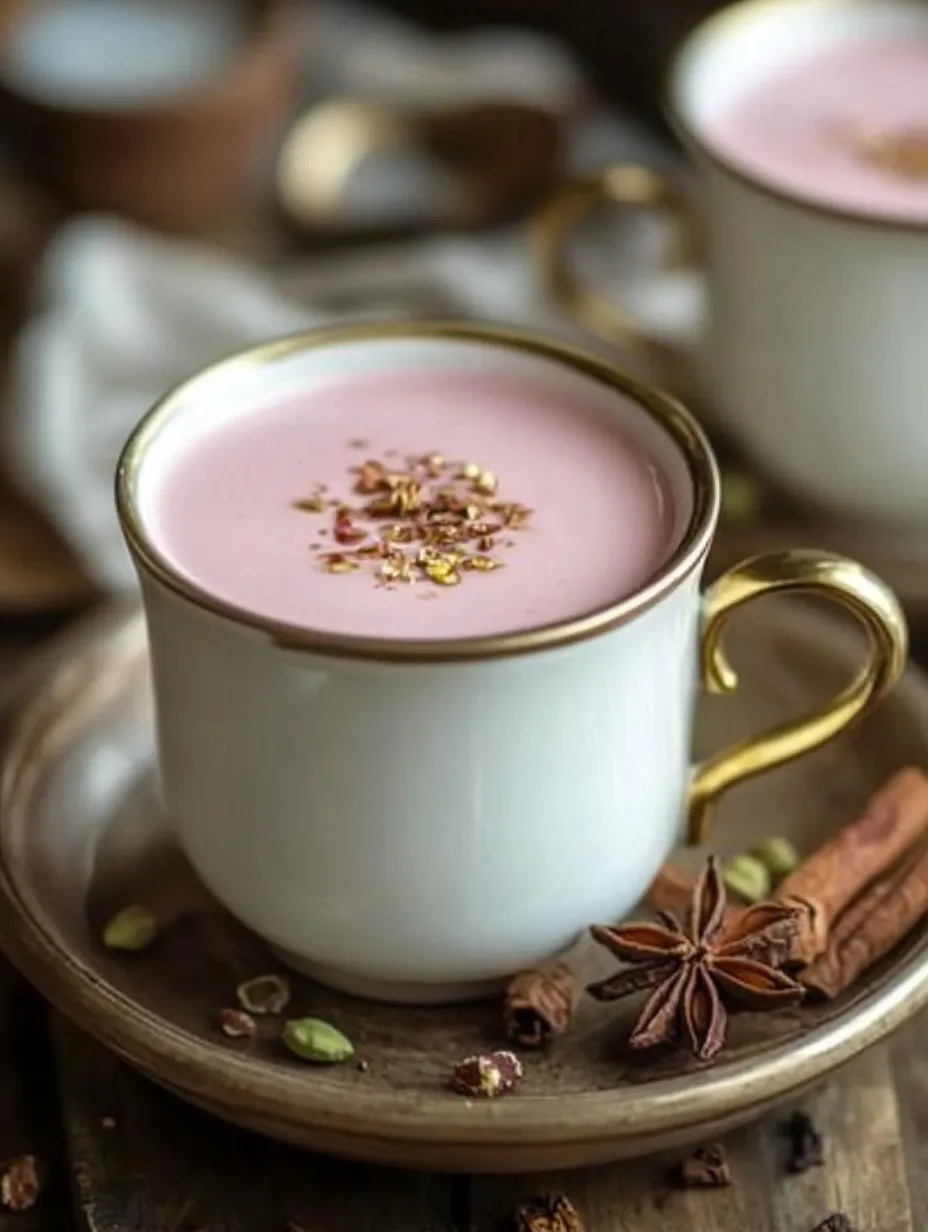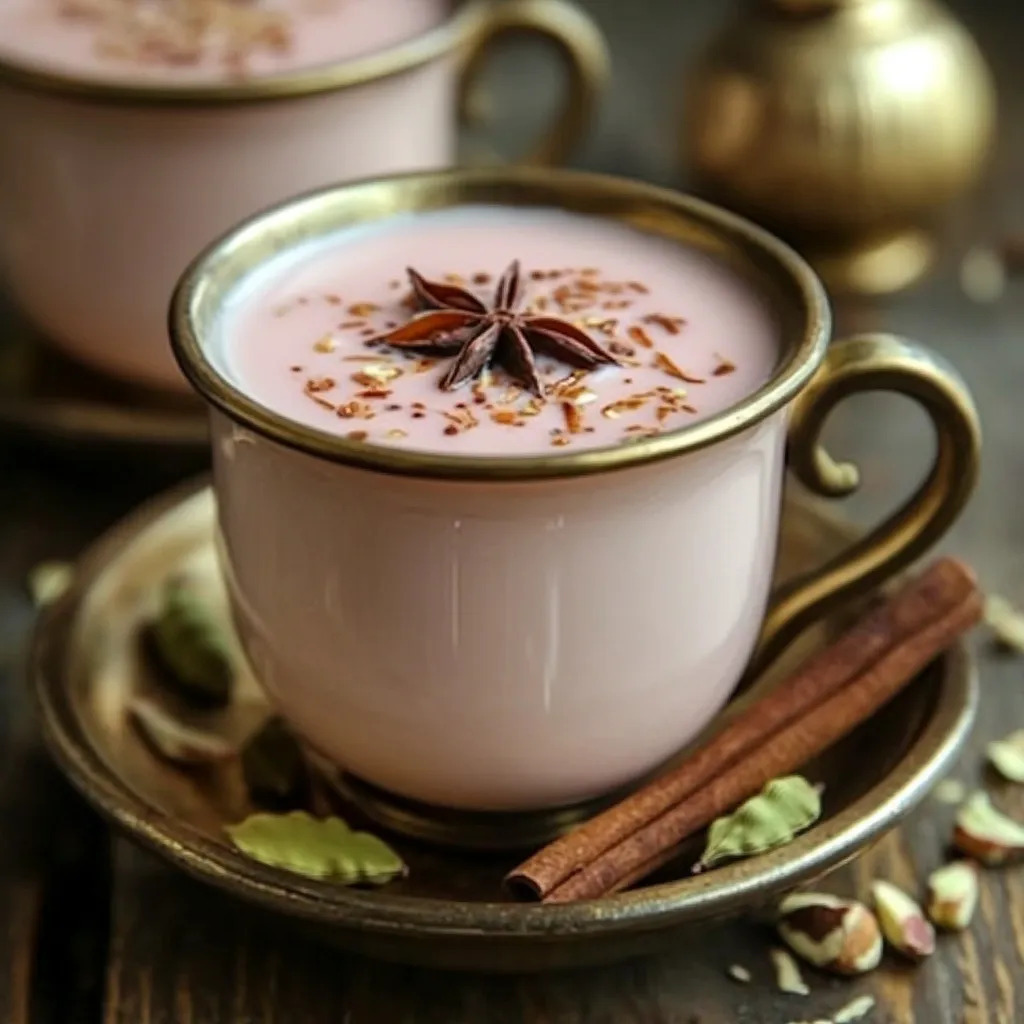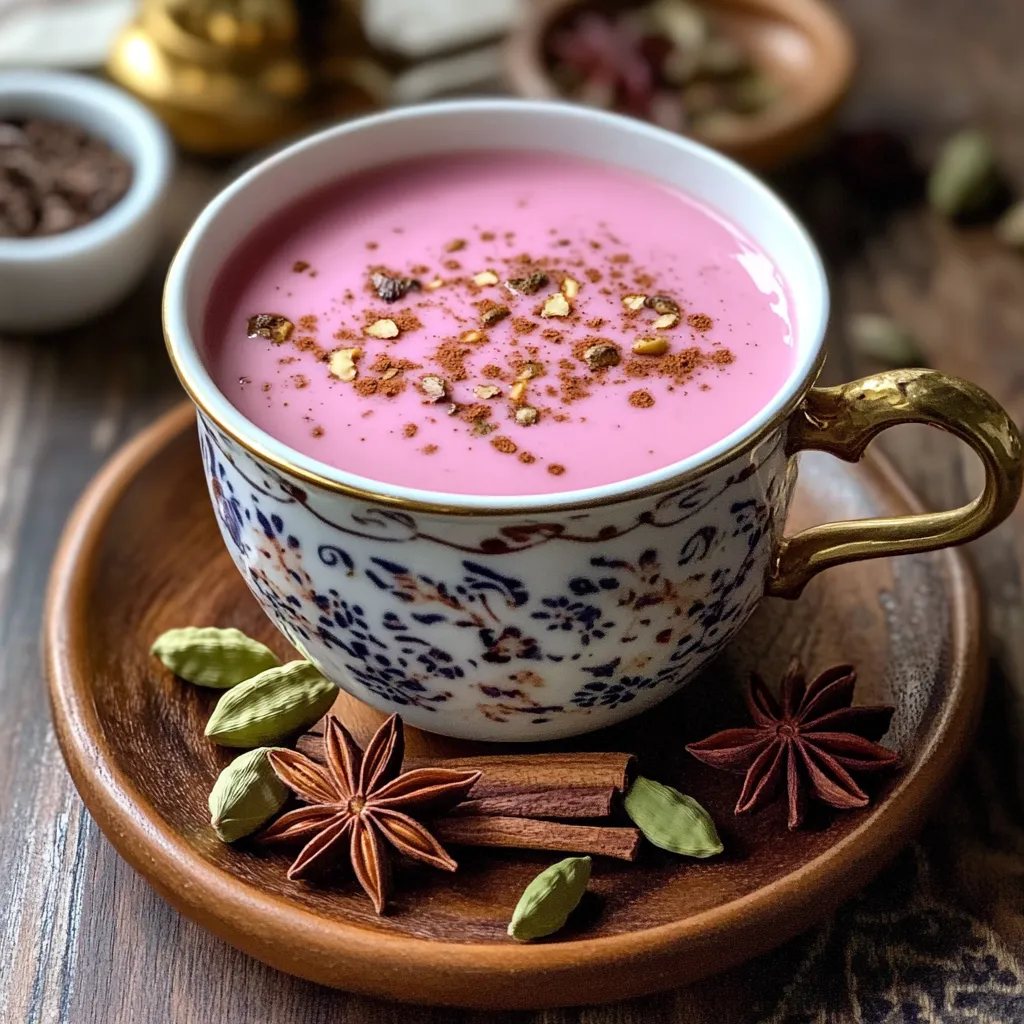 Pin it
Pin it
This pink-hued Kashmiri tea offers a sensory treat that goes way beyond your regular cuppa. The traditional method combines green tea, aromatic spices, and a touch of salt to create a soothing drink that looks gorgeous and tastes even better.
Making this chai at home always takes me back to my first sip in a tiny Kashmiri teahouse. The owner told me the secret was taking your time and watching the temperature carefully.
Key Ingredients
- Kashmiri Green Tea: Traditional choice, but regular green tea works fine too.
- Baking Soda: This creates the signature pink color we're after.
- Whole Milk: Gives that perfect creamy texture we want.
- Star Anise: Adds a gentle licorice-like flavor.
- Cardamom: Whole pods pack more punch than ground stuff from a jar.
- Salt: Don't skip this—it brings out all the other flavors.
After making chai for years, I've learned that good ingredients and the right technique turn an okay cup into something truly special.
Step-By-Step Guide
- 1. First Brew:
- Start with fresh, cold water in a thick-bottomed pot. Let it come to a rolling boil before adding tea leaves. Water temperature affects how the tea releases its flavors.
- 2. Color Change:
- Add baking soda bit by bit, stirring gently. Watch the fascinating color shift from green to brownish. This reaction is crucial for getting that final pink shade.
- 3. Adding Spices:
- Toss in star anise, lightly crushed cardamom pods, and cinnamon. Let it simmer on low heat so the spices can release their aromatic oils. Wait until the liquid reduces by half to concentrate the flavors.
- 4. Adding Milk:
- Pour in milk in a steady stream while stirring. The mixture will slowly turn its trademark pink color. Keep the heat moderate to avoid burning.
- 5. Final Simmer:
- Let it bubble gently for 10-15 minutes, stirring now and then. The chai should become thick, creamy and show a vibrant pink hue.
 Pin it
Pin it
In Kashmir, every morning starts with the rhythmic sound of wooden mallets churning this pink drink in big copper samovars. My aunt always told me that being patient during the slow simmming really brings out the deepest flavors.
 Pin it
Pin it
Choosing Your Tea
Go for loose leaf green tea for the best results. Don't use teabags as they can make your chai taste bitter.
Watching The Heat
Keep the heat gentle after adding milk. Too high heat can make it curdle and mess up the final color.
Spice Mix
Lightly toast whole spices before adding them to boost their aroma. Adjust amounts based on what you like best.
Old Traditions
The art of making Kashmiri Pink Chai goes back hundreds of years, passed down through families in the Kashmir Valley. Each household adds their own twist while keeping the core elements that make this drink special. From busy Srinagar streets to quiet mountain homes, the ritual of making noon chai brings people together. The pink color, achieved through careful oxidation, isn't just pretty to look at—it shows the maker's skill and patience. Modern versions welcome new ingredients while respecting old methods.
Cultural Importance
In Kashmir, pink chai means hospitality and community. It's served at weddings, family gatherings, and religious events, going beyond just a drink—it's a conversation starter and social glue. The warming spices make it especially popular during Kashmir's cold winters. Many families still use traditional copper pots, believing they enhance the tea's flavor. Adding chopped nuts, especially pistachios and almonds, reflects the region's abundance of dried fruits.
Good For You
Besides tasting rich, Kashmiri Pink Chai offers many health perks. The green tea base provides antioxidants, while cardamom helps digestion. Cinnamon helps control blood sugar, and star anise has anti-inflammatory properties. The salt content helps maintain electrolyte balance, especially helpful in cold weather. The mix of milk and spices creates a warming feeling that Kashmiris believe helps keep the body warm during harsh winters. The unique preparation also boosts the availability of certain nutrients.
New Twists
Today's versions of pink chai cater to dietary choices while keeping its essential character. Plant-based options using almond or oat milk give equally creamy results. Some cafes offer reduced-sugar versions sweetened with dates or stevia. The classic recipe has inspired creative variations like pink chai ice cream, lattes, and even desserts. Social media has sparked worldwide interest in this unique beverage, leading to fusion recipes that blend Kashmiri traditions with global flavors.
How To Serve It
Pink chai pairs wonderfully with traditional Kashmiri breads like girda or lavasa. For a modern take, serve it with buttery cookies or shortbread. The tea can be enjoyed throughout the day, but works especially well as a breakfast drink or afternoon pick-me-up. During summer, a chilled version provides refreshing relief. Some fans enjoy it as a dessert drink, enhancing its natural sweetness with honey or condensed milk. Presentation matters—traditional copper cups boost both visual appeal and flavor perception.
 Pin it
Pin it
The secret to amazing Kashmiri Pink Chai is understanding how each ingredient adds to its unique flavor. This recipe connects you to age-old traditions while creating new memories around every steaming cup.
Frequently Asked Questions
- → How does the tea change color?
- It happens because of a reaction between tea, baking soda, and milk. This natural process turns the tea from red to pink.
- → Can I use green tea I already have?
- Absolutely! While Kashmiri tea offers the best results, regular green tea works too, though the color may vary a little.
- → Why does it take so much time?
- Letting it simmer slowly helps deepen the flavor, reduce the liquid, and get the right color for that authentic taste.
- → Is baking soda a must?
- Yes, it's key to getting the magical color and distinct flavor. Without it, you'd miss the signature transformation.
- → Can I skip the milk?
- You can try full-fat plant-based milk for an alternative, but it might change the taste and how the color turns out.
